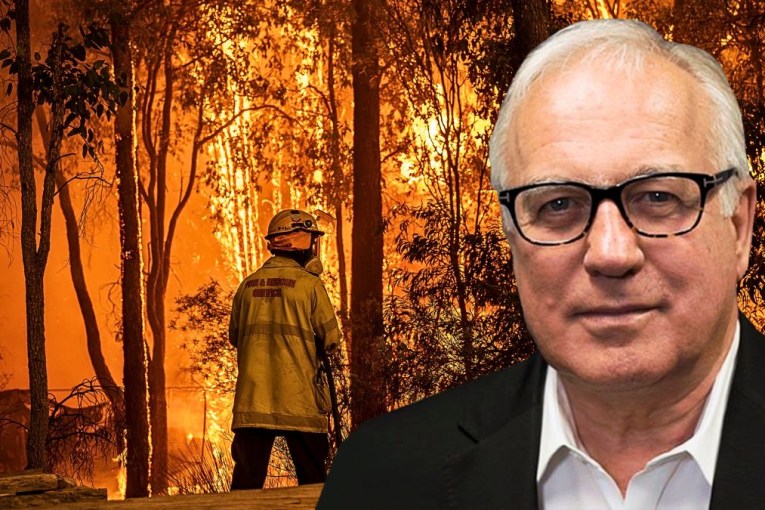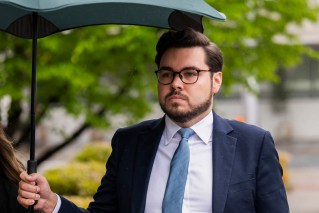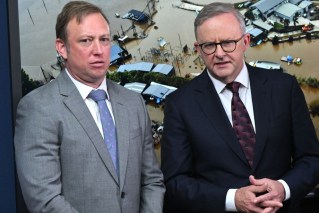Echoes of Donald Trump’s language in the rants of the Texas gunman

A photo (top) of Elsa Mendoza Marquez, a Mexican school teacher from Ciudad Juarez who was killed in the shooting. Photo: Getty
At campaign rallies before last year’s mid-term elections, President Donald Trump repeatedly warned that America was under attack by immigrants heading for the border.
“You look at what is marching up. That is an invasion!” he declared at one rally. “That is an invasion!”
Nine months later, a 21-year-old white man is accused of opening fire in a Walmart in El Paso, Texas killing 20 people and injuring dozens more after writing a manifesto railing against immigration and announcing that “this attack is a response to the Hispanic invasion of Texas”.
The suspect wrote that his views “pre-date Trump”, as if anticipating the political debate that would follow the bloodbath.
But if Trump did not originally inspire the gunman, he has brought into the mainstream polarising ideas and people once consigned to the fringes of American society.
While other leaders have expressed concern about border security and the costs of illegal immigration, Trump has filled his public speeches and Twitter feed with sometimes false, fear-stoking language even as he welcomed to the White House a corps of hard-liners, demonisers and conspiracy theorists shunned by past presidents of both parties.
Because of this, Trump is ill equipped to provide the kind of unifying, healing force that other presidents projected in times of national tragedy.

People hold up their phones in lieu of candles at an interfaith vigil for victims of shootings. Photo: Getty
In televised remarks on Sunday afternoon before boarding Air Force One to return to Washington from his New Jersey home, Trump praised the performance of law enforcement officers and offered condolences to the victims and their families in El Paso as well as in Dayton, Ohio, where an unrelated mass shooting occurred early Sunday.
“Hate has no place in our country, and we’re going to take care of it,” the president said, declining to elaborate but promising to speak more on Monday morning.
He made no mention of white supremacy or the El Paso manifesto, but instead focused on what he called “a mental illness problem”.
- Read more: El Paso victim died protecting her baby son
Democratic presidential candidates wasted little time on Sunday pointing the finger at Trump, arguing that he had encouraged extremism with what they called hateful language.
Trump’s advisers and allies rejected that, arguing that the president’s political foes were exploiting a tragedy to further their political ambitions.
“I’m saying that President Trump has a lot to do with what happened in El Paso yesterday,” Beto O’Rourke, a Democratic presidential candidate who represented El Paso in Congress, said on Face the Nation on CBS.
O’Rourke said Trump “sows the kind of fear, the kind of reaction that we saw in El Paso yesterday”.
Mick Mulvaney, the acting White House chief of staff, said it was outrageous to hold Trump responsible for the acts of a madman or suggest the president sympathised with white supremacists.

The US flag flies at half-mast above the White House. Photo: Getty
“I don’t think it’s at all fair to sit here and say that he doesn’t think that white nationalism is bad for the nation,” he said on This Week on ABC.
“These are sick people. You cannot be a white supremacist and be normal in the head. These are sick people. You know it, I know it, the president knows it. And this type of thing has to stop. And we have to figure out a way to fix the problem, not figure out a way to lay blame.”
Linking political speech, however heated, to the specific acts of ruthless mass killers is a fraught exercise, but experts on political communication said national leaders could shape an environment with their words and deeds, and bore a special responsibility to avoid inflaming individuals or groups, however unintentionally.
“The people who carry out these attacks are already violent and hateful people,” said Nathan P. Kalmoe, an assistant professor at Louisiana State University who has studied hate speech.
“But top political leaders and partisan media figures encourage extremism when they endorse white supremacist ideas and play with violent language. Having the most powerful person on Earth echo their hateful views may even give extremists a sense of impunity.”
This has come up repeatedly during Trump’s presidency, whether it be the white supremacists who marched in Charlottesville, Virginia, or the bomber who sent explosives to Trump’s political adversaries and prominent news media figures or the gunman who stormed a Pittsburgh synagogue after ranting online about “invaders” to the United States.
The Media has a big responsibility to life and safety in our Country. Fake News has contributed greatly to the anger and rage that has built up over many years. News coverage has got to start being fair, balanced and unbiased, or these terrible problems will only get worse!
— Donald J. Trump (@realDonaldTrump) August 5, 2019
….this legislation with desperately needed immigration reform. We must have something good, if not GREAT, come out of these two tragic events!
— Donald J. Trump (@realDonaldTrump) August 5, 2019
David Livingstone Smith, a philosophy professor at the University of New England and the author of a book on dehumanisation of whole categories of people, said Trump had emboldened Americans whose views were seen as unacceptable in everyday society not long ago.
“This has always been part of American life,” he said.
“But Trump has given people permission to say what they think. And that’s crack cocaine. That’s powerful.
“When someone allows you to be authentic, that’s a very, very potent thing. People have come out of the shadows.”
Kris Kobach, the former secretary of state in Kansas and an immigration hardliner who is close to Trump, said Democrats were being outrageous.
“They are trying to exploit this horrific tragedy to attack the president and push an open-borders agenda and push gun control,” he said. “It’s not only incorrect, it’s improper to do this at a time when people are still grieving.”
Dark, anti-immigrant language has flavoured American politics for generations. Politicians in the 1880s and 1920s rose to power by seizing on fears of Italians, Japanese, Chinese and other immigrants, stoking fears about the loss of the “American identity”.
In more recent years, those who trafficked in racist conspiracies and warned that immigrants were a threat to the safety and economic well-being of native-born Americans were largely ignored by the bipartisan establishment even as they gave voice to the views of many Americans who felt disenfranchised.
But Trump embraced racist conspiracies for years: He was among the leading voices who pushed the “birtherism” lie claiming that President Barack Obama was not born in the United States.
And since his campaign for the presidency, Trump has taken those views to the centre of American politics.
He denounces immigrant gang members as “animals” and complains that unauthorised migrants “pour into and infest” the United States.
Illegal immigration is a “monstrosity,” he says, while demanding that even American-born congresswomen of colour “go back” to their home countries.
He uses the word “aliens” to refer to immigrants long after it was deemed dehumanising even by other Republicans. And his language about immigration is suffused in anger: In El Paso earlier this year, he demanded that Democrats help him “deport criminal aliens and keep the coyotes and traffickers and drug dealers the hell out of our country”.
Along the way, Trump has empowered groups like the Federation for American Immigration Reform, which has been designated a hate group by the liberal Southern Poverty Law Centre. He has become a reliable megaphone for anti-immigrant screeds carried by Breitbart News and Lou Dobbs on the Fox Business Network.
And he has seeded his administration with activists, lawyers and a cadre of former Capitol Hill staff members on the far end of the anti-immigration spectrum, all of whom had toiled for years in obscurity, viewed by Democrats and Republicans alike as too radical.
Stephen Miller, who promoted anti-immigration views as a congressional aide, is now the chief architect of Trump’s immigration agenda.
Julie Kirchner, former executive director at the Federation for American Immigration Reform, is a top official at US Citizenship and Immigration Services, which manages legal immigration.
Jon Feere, a former legal analyst at the Centre for Immigration Studies, which advocates significantly less immigration, is a top adviser at Immigration and Customs Enforcement.
And Steve Bannon, the former chairman of Breitbart News, ran Trump’s campaign and served in the White House as the president’s chief strategist.
While the police in Ohio said they were still looking into the motive of the Dayton gunman, the El Paso killings were quickly linked to politics.
In the 2300-word manifesto tied by the police to Patrick Crusius, the suspect in the El Paso shooting, he said he was “simply defending my country from cultural and ethnic replacement brought on by an invasion”.
Trump said much the same four years ago, at an event hosted by the Texas Patriots at a Houston-area school.
“Everything’s coming across the border,” Trump said. “The illegals, the cars, the whole thing – it’s like a big mess, blah. It’s like vomit.”
Crusius described legal and illegal immigrants as “invaders” who are flooding into the US, a term Trump has frequently employed to argue for a border wall.
In July 2015, Trump tweeted at critics: “WHAT U REALLY SHOULD B ANGRY ABT IS THE INVASION OF MILLIONS OF ILLEGALS TKING OVER AMERICA! NOT DonaldTrump.” After using the term regularly during last fall’s campaign, he has begun using it for next year’s campaign as well. In one Facebook ad in February, for instance, his campaign wrote, “It’s CRITICAL that we STOP THE INVASION.”
"@sandrapatriot: @stephenfhayes WHAT U REALLY SHOULD B ANGRY ABT IS THE INVASION OF MILLIONS OF ILLEGALS TKING OVER AMERICA! NOT DonaldTrump
— Donald J. Trump (@realDonaldTrump) July 25, 2015
In March, Trump defended the use of the term before an audience of conservative activists.
“They don’t like it when I say it – but we are being invaded,” he said of his critics. “We’re being invaded by drugs, by people, by criminals. And we have to stop it.”
White House aides argue that there is a vast difference between favouring tough policies at the border and condoning violence, but they resigned themselves to a fresh round of criticism of the president from the moment they heard about the El Paso shooting and the manifesto.
Several of Trump’s advisers said they were happy his public messages since the shooting had been restrained and presidential, but they conceded he needed to do more to unify the country.
Still, few advisers believed he would be easily moved to perform as past presidents have during national crises, with a grand speech or even a news conference with the FBI director, to whom the president would have to partly cede the stage.
For their part, other Republicans made a point over the weekend of denouncing white nationalism, going where Trump would not.
“There have now been multiple attacks from self-declared white terrorists here in the US in the last several months,” George P. Bush, the Texas land commissioner and son of former governor Jeb Bush of Florida, said in a statement.
“This is a real and present threat that we must all denounce and defeat.”








